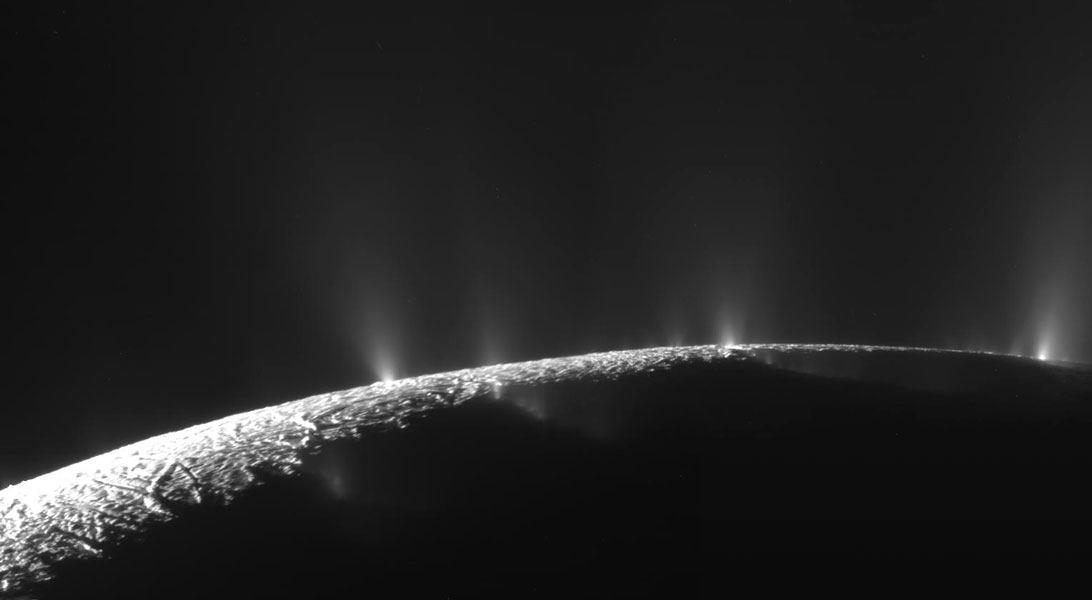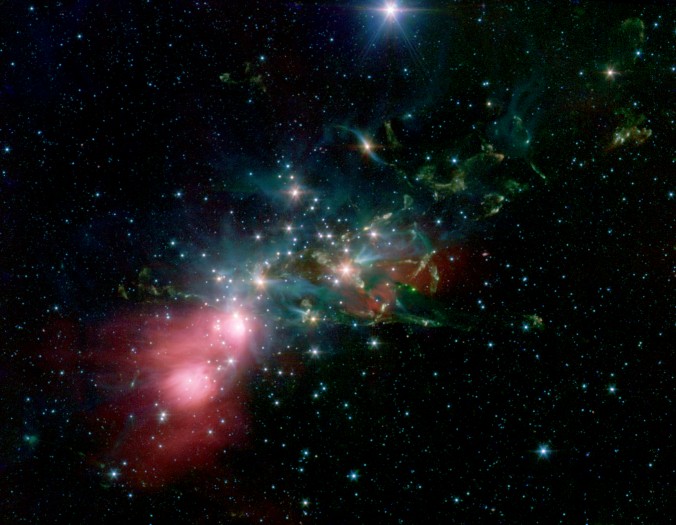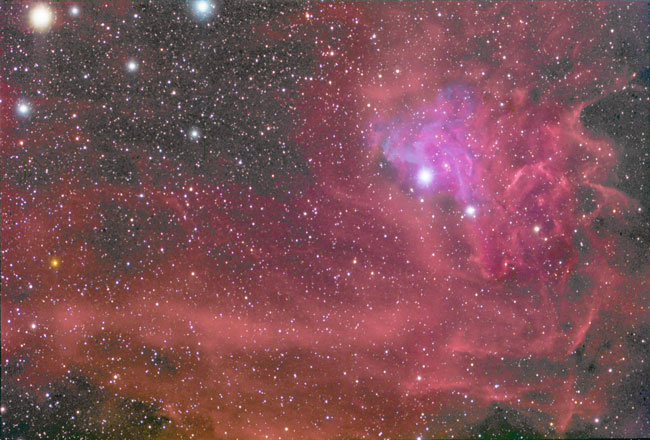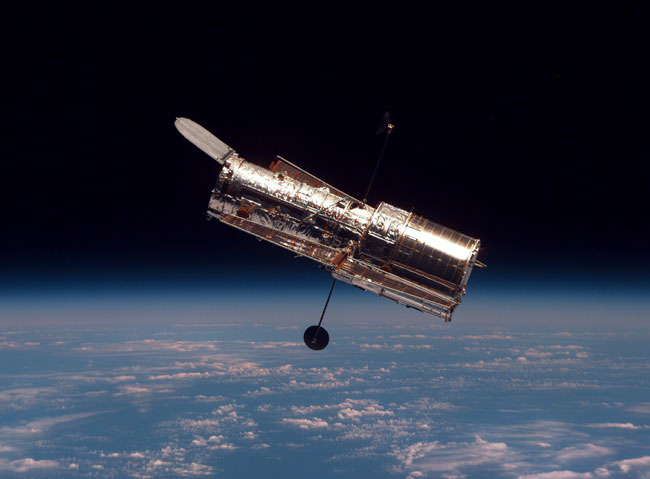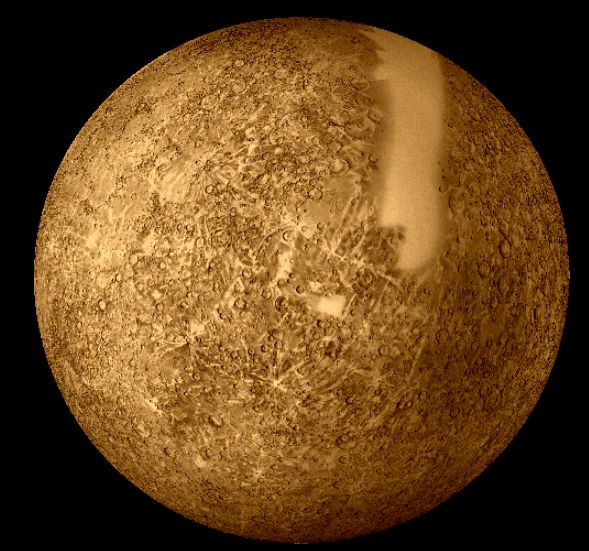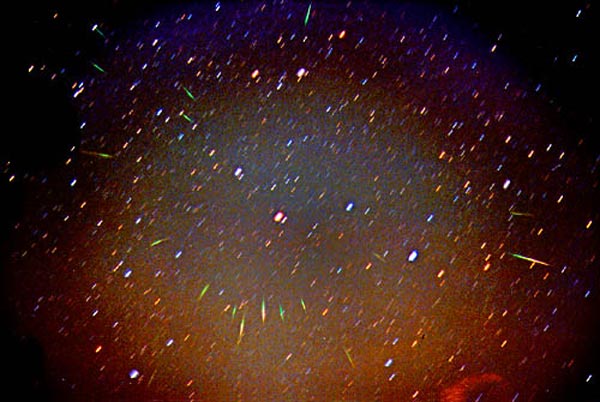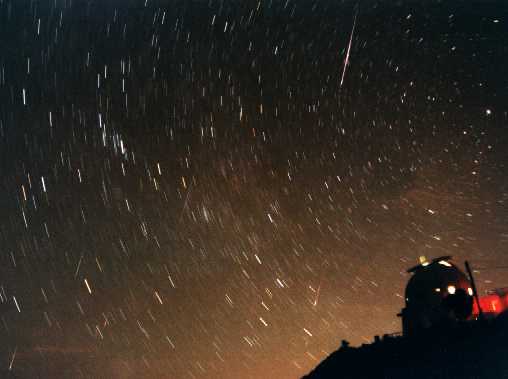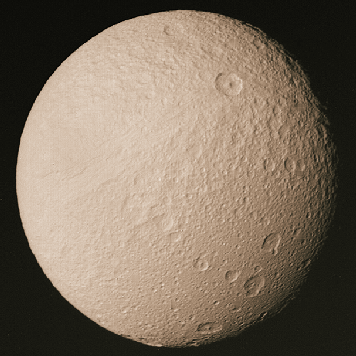| << Previous | Index | Next >> |
2014
Click to play embedded YouTube video.
Video Credit: Cassini Radar Mapper, JPL, USGS, ESA, NASA
2013 Comet Hale-Bopp, the Great Comet of 1997, was quite a sight. In the above photograph taken on 1997 April 6, Comet Hale-Bopp was imaged from the Indian Cove Campground in the Joshua Tree National Park in California, USA. A flashlight was used to momentarily illuminate foreground rocks in this six minute exposure. An impressive blue ion tail was visible above a sunlight-reflecting white dust tail. Comet Hale-Bopp remained visible to the unaided eye for over a year before returning to the outer Solar System and fading. As Comet ISON approaches the Sun this week, sky enthusiasts around the Earth are waiting to see if its tails will become even more spectacular than those displayed by Comet Hale-Bopp.
2012 Barred spiral galaxy NGC 1365 is truly a majestic island universe some 200,000 light-years across. Located a mere 60 million light-years away toward the chemical constellation Fornax, NGC 1365 is a dominant member of the well-studied Fornax galaxy cluster. This sharp color image shows intense star forming regions at the ends of the bar and along the spiral arms, and details of dust lanes cutting across the galaxy's bright core. At the core lies a supermassive black hole. Astronomers think NGC 1365's prominent bar plays a crucial role in the galaxy's evolution, drawing gas and dust into a star-forming maelstrom and ultimately feeding material into the central black hole. Discovered on October 27, the position of a bright supernova is indicated in NGC 1365. Cataloged as SN2012fr, the type Ia supernova is the explosion of a white dwarf star.
2011 In this artist's illustration, two distant galaxies formed about 2 billion years after the big bang are caught in the afterglow of GRB090323, a gamma-ray burst seen across the Universe. Shining through its own host galaxy and another nearby galaxy, the alignment of gamma-ray burst and galaxies was inferred from the afterglow spectrum following the burst's initial detection by the Fermi Gamma Ray Space Telescope in March of 2009. As seen by one of the European Southern Observatory's very large telescope units, the spectrum of the burst's fading afterglow also offered a surprising result - the distant galaxies are richer in heavy elements than the Sun, with the highest abundances ever seen in the early Universe. Heavy elements that enrich mature galaxies in the local Universe were made in past generations of stars. So these young galaxies have experienced a prodigious rate of star formation and chemical evolution compared to our own Milky Way. In the illustration, the light from the burst site at the left passes successively through the galaxies to the right. Spectra illustrating dark absorption lines of the galaxies' elements imprinted on the afterglow light are shown as insets. Of course, astronomers on planet Earth would be about 12 billion light-years off the right edge of the frame.
2010
Image Credit & Copyright: Tor Even Mathisen; Music: Per Wollen; Vocals: Silje Beate Nilssen
2009 What's happening on the surface of Saturn's moon Enceladus? Enormous ice jets are erupting. Giant plumes of ice have been photographed in dramatic fashion by the robotic Cassini spacecraft during this past weekend's flyby of Saturn's moon Enceladus. Pictured above, numerous plumes are seen rising from long tiger-stripe canyons across Enceladus' craggy surface. Several ice jets are even visible in the shadowed region of crescent Enceladus as they reach high enough to scatter sunlight. Other plumes, near the top of the above image, appear visible just over the moon's sunlit edge. That Enceladus vents fountains of ice was first discovered on Cassini images in 2005, and has been under close study ever since. Continued study of the ice plumes may yield further clues as to whether underground oceans, candidates for containing life, exist on this distant ice world.
2008
2007 This wide, sharp telescopic view reveals galaxies scattered beyond the stars near the northern boundary of the high-flying constellation Pegasus. Prominent at the upper right is NGC 7331. A mere 50 million light-years away, the large spiral is one of the brighter galaxies not included in Charles Messier's famous 18th century catalog. The disturbed looking group of galaxies at the lower left is well-known as Stephan's Quintet. About 300 million light-years distant, the quintet dramatically illustrates a multiple galaxy collision, its powerful, ongoing interactions posed for a brief cosmic snapshot. On the sky, the quintet and NGC 7331 are separated by about half a degree.
2006 Runaway stars are massive stars traveling rapidly through interstellar space. Like a ship plowing through cosmic seas, runaway star Alpha Cam has produced this graceful arcing bow wave or bow shock - moving at over 60 kilometers per second and compressing the interstellar material in its path. The bright star above and left of center in this wide (3x2 degree) view, Alpha Cam is about 25-30 times as massive as the Sun, 5 times hotter (30,000 kelvins), and over 500,000 times brighter. About 4,000 light-years away in the long-necked constellation Camelopardalis, the star also produces a strong wind. The bow shock stands off about 10 light-years from the star itself. What set this star in motion? Astronomers have long thought that Alpha Cam was flung out of a nearby cluster of young hot stars due to gravitational interactions with other cluster members or perhaps by the supernova explosion of a massive companion star.
2005 Dusty NGC 1333 is seen as a reflection nebula in visible light images, sporting bluish hues characteristic of starlight reflected by dust. But at longer infrared wavelengths, the interstellar dust itself glows - shown in red in this false-color Spitzer Space Telescope image. The penetrating infrared view also shows youthful stars that would otherwise still be obscured by the dusty clouds which formed them. Notably, greenish streaks and splotches that seem to litter the region trace the glow of cosmic jets blasting away from emerging young stellar objects as the jets plow into the cold cloud material. In all, the chaotic scene likely resembles one in which our own Sun formed over 4.5 billion years ago. NGC 1333 is a mere 1,000 light-years distant in the constellation Perseus.
2004 Where are Titan's craters? Throughout our Solar System's five billion-year history, dangerous rocks and chunks of ice have continually slammed into planets and moons - usually creating numerous long lasting impact craters. When the robot spacecraft Cassini swooped past Saturn's moon Titan last month, however, radar images showed few craters. One such image, spanning 75 kilometers across, is shown above. The imaged structures are not yet understood, but may involve some sort of flows. Titan is already known to be an unusual moon, sporting a thick atmosphere, large size, small amounts of organic compounds. Craters are surely created on all surfaces in the Solar System, but might be destroyed later, as on Earth and Jupiter's moon Io. How craters are destroyed on Titan remains a topic of speculation, but might become better understood by consideration of data returned by future flybys of Cassini and by the probe Huygens that will descend toward Titan's surface in December.
2003 Rippling dust and gas lanes give the Flaming Star Nebula its name. The red and purple colors of the nebula are present in different regions and are created by different processes. The bright star AE Aurigae, visible toward the image right, is so hot it is blue, emitting light so energetic it knocks electrons away from surrounding gas. When a proton recaptures an electron, red light is frequently emitted. The purple region's color is a mix of this red light and blue light emitted by AE Aurigae but reflected to us by surrounding dust. The two regions are referred to as emission nebula and reflection nebula, respectively. Pictured above, the Flaming Star Nebula, officially known as IC 405, lies about 1500 light years distant, spans about 5 light years, and is visible with a small telescope toward the constellation of Auriga.
2002 Why put observatories in space? Most telescopes are on the ground. On the ground, you can deploy a heavier telescope and fix it more easily. The trouble is that Earth-bound telescopes must look through the Earth's atmosphere. First, the Earth's atmosphere blocks out a broad range of the electromagnetic spectrum, allowing a narrow band of visible light to reach the surface. Telescopes which explore the Universe using light beyond the visible spectrum, such as those onboard the Chandra X-ray Observatory need to be carried above the absorbing atmosphere. Second, the Earth's atmosphere blurs the light it lets through. The blurring is caused by varying density and continual motion of air. By orbiting above the Earth's atmosphere, the Hubble Space Telescope, pictured above, can get clearer images. In fact, even though HST has a mirror 15 times smaller than large Earth-bound telescopes, it can still resolve finer details. A future large optical telescope in space is planned.
2001 Mercury, the closest planet to the Sun, remains the most mysterious of the Solar System's inner planets. Hiding in the Sun's glare it is a difficult target for Earth bound observers. The only spacecraft to explore Mercury close-up was Mariner 10 which executed three flybys of Mercury in 1974 and 1975, surveying approximately 45 percent of its surface. Mariner 10 deftly manuevered to photograph part of the sunlit hemisphere during each approach, passed behind the planet, and continued to image the sun-facing side as the spacecraft receded. Its highest resolution photographs recorded features approximately a mile across. A reprocessing of the Mariner 10 data has resulted in this dramatic mosaic. Like the Earth's Moon, Mercury's surface shows the scars of impact cratering - the smooth vertical band and patches visible above represent regions where no image information is available.
2000 Just last week this long lovely Leonid shower meteor arced through the night. Captured on November 17/18 by photographer Bob Yen, the meteor trail spans about 70 times the apparent diameter of the full moon in the skies above Mt. Wilson, California, USA. The Leonid's path flashes from the outskirts of constellation Gemini to the triangle-shaped head of Taurus (lower right). Of course, the trail points back toward Leo, the shower's eponymous radiant, while passing near such night sky notables as galactic star cluster M35 (upper left) and Taurus's brightest star, red giant Aldebaran. Though the sky was ruled by a bright but waning Moon and brilliant Jupiter, the Leonid meteor shower still awed observers at dark sky locations with peak rates of hundreds of meteors per hour.
1999 The 1999 Leonids meteor shower was not equally good for everybody. Only observers in Europe and the Middle East with clear skies near 2 am (UTC) on 1999 November 18 saw rates shoot up to a meteor every few seconds. Above, however, is a picture taken from Spain during this time, with over a dozen faint meteors visible as green streaks eminating from Leo during just a six minute exposure. Although more numerous, the 1999 Leonids did not have the same high proportion of bright meteors and fireballs as the 1998 Leonids. Last year's Leonid fireballs have been traced back to the 1333 passage of Comet Tempel-Tuttle. The orbit of Jupiter continually deflected one stream of cast-off particles while the smallest meteors in this stream were removed by light pressure from the Sun. The remaining Leonids were relatively large, pea sized or larger, compared to the sand-sized Leonids that are more common.
1998 More Leonids were visible at some places than others. In Israel, early in the morning of 17 November, it rained meteors though a clear sky. Observers there reported a peak rate for the 1998 Leonid Meteor Shower of about 600 meteors per hour. Visible in the above picture are no fewer than seven Leonid meteors occurring over just a few minutes. (Can you find them all?) The dome of the Wise Observatory is visible on the right. The Earth's rotation causes stars to appear as arcs. The 1998 Leonids might be remembered not for their numbers, however, but for the unusually high fraction of bright fireballs. Another eventful Leonid Meteor Shower is forecast for the same time next year.
1997 Einstein's Special Theory of Relativity says that nothing can travel faster than the speed of light. Jets of protons and electrons that shoot away from objects such as quasars and black holes appear to travel at speeds approaching this maximum speed, though. Such jets carry tremendous energy and can ram straight through interstellar material. In the above frame from a computer simulation, a jet traveling only 98 percent of light speed rams and mixes with interstellar material. Even higher energy jets might well explain the structure seen around Cygnus A.
1996 Apollo 12 was the second mission to land humans on the Moon. The landing site was picked to be near the location of Surveyor 3, a robot spacecraft that had landed on the moon three years earlier. Pictured above, Apollo 12 astronauts Conrad and Bean retrieve parts from the Surveyor. The Lunar Module is visible in the distance. Apollo 12 brought back many photographs and moon rocks. Among the milestones made by Apollo 12 was the deployment of the Apollo Lunar Surface Experiments Package, which carried out many experiments including one that measured the solar wind.
1995 Tethys is one of the larger and closer moons of Saturn. It was visited by both Voyager spacecraft - Voyager 1 in November 1980 and by Voyager 2 in August 1981. Tethys is now known to be composed almost completely of water ice. Tethys shows a large impact crater that nearly circles the planet. That the impact that caused this crater did not disrupt the moon is taken as evidence that Tethys was not completely frozen in its past. Tethys has two moons named Telesto and Calypso that orbit just ahead of it and behind it. Tethys was originally discovered in 1684 by Giovanni Cassini.
| << Previous | Index | Next >> |



